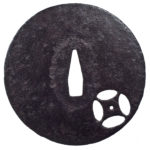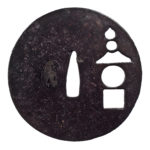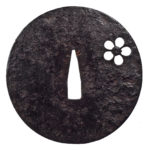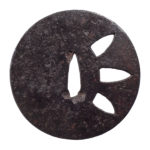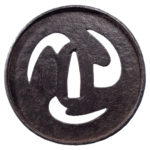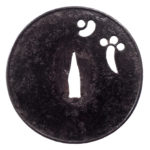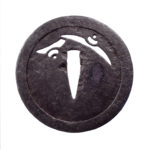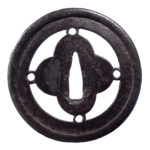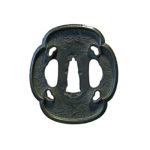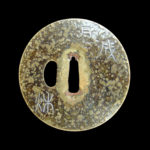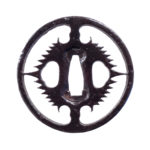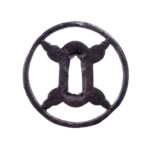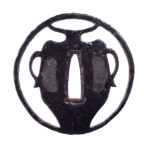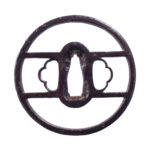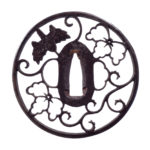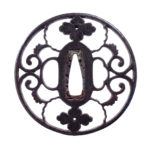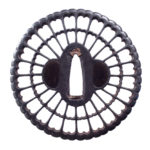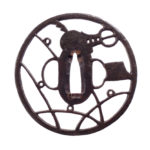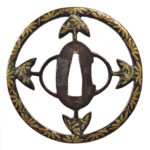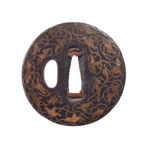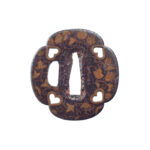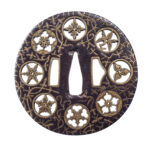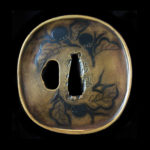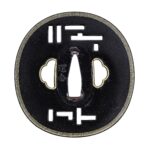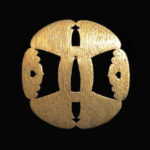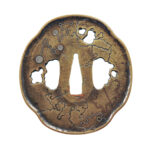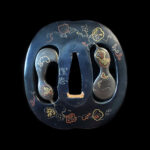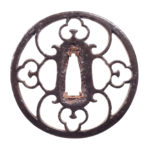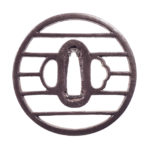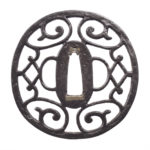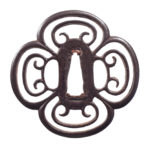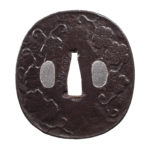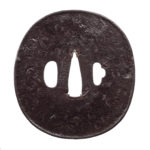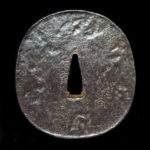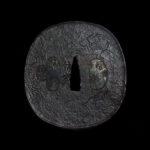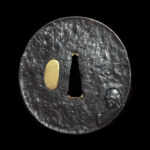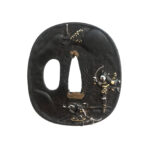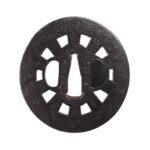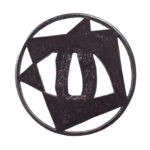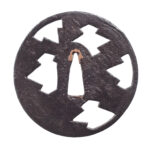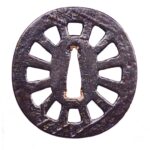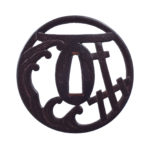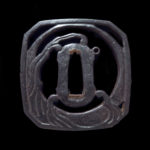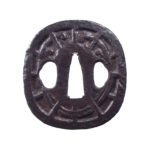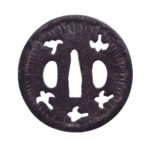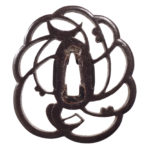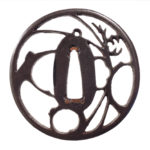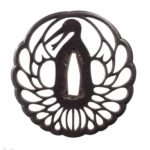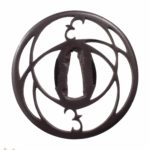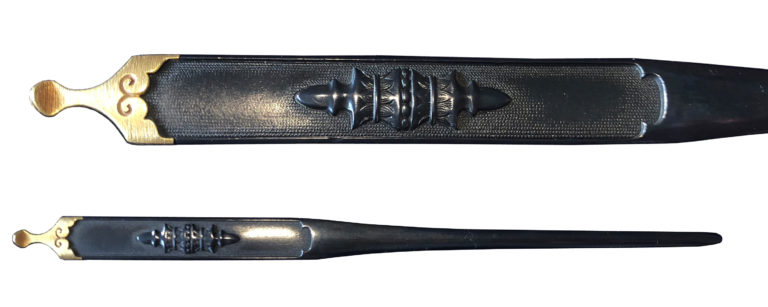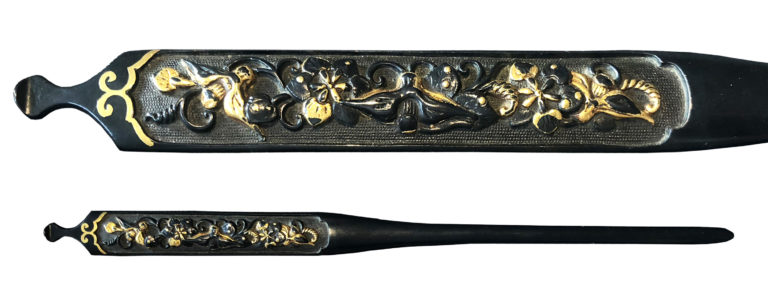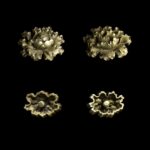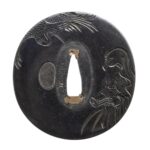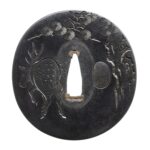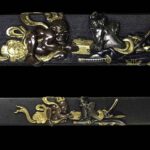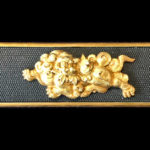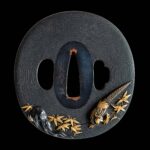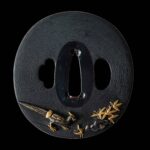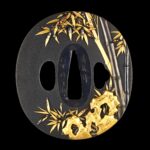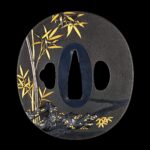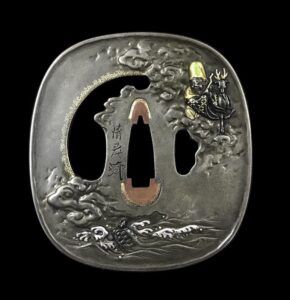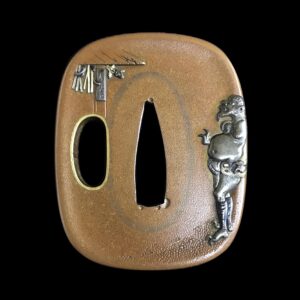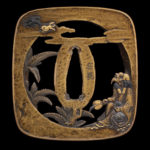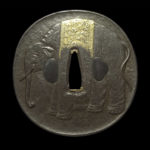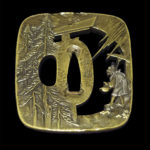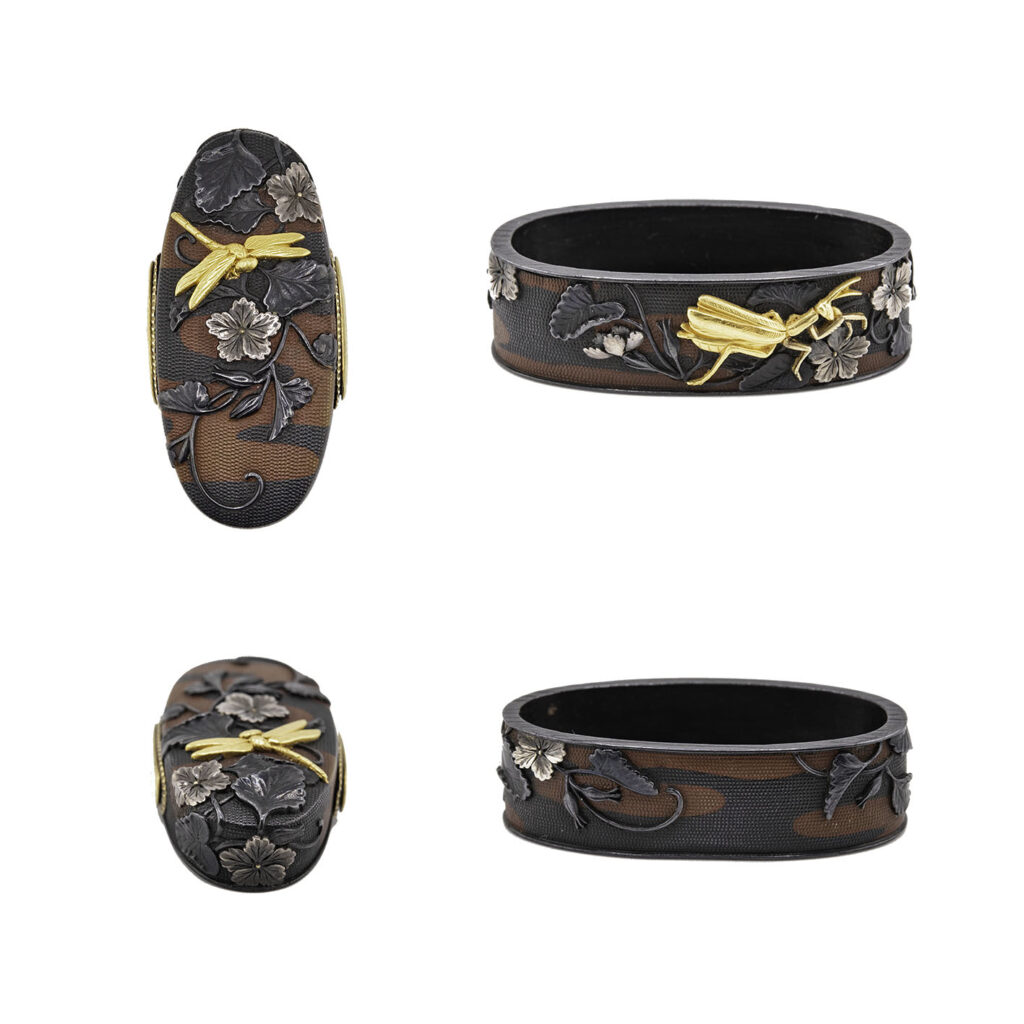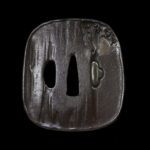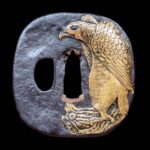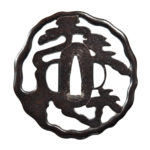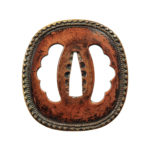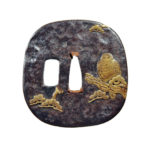Tsuba Schools
Tsuba and Kodogu schools in chronological order.
Find more pictures and information by clicking on the highlighted school names.
Ko-Tosho Tsuba are the earliest Tsuba made. With their subtle design and rough surface they lay the basis for all emerging Tsuba schools and different designs. From around the middle of the Momoyama period we speak of Tosho tsuba.
Ko-Katchushi and Katchushi
Ko-Katchushi Tsuba share many characteristics with Ko-Tosho Tsuba but they show a distinct rims or more complicated and larger openworks. Due to the similarity of their steel to Japanese Helmets and the way their rims are crafted they might have been made by armorers and makers of helmets. From around the middle of the Momoyama period we speak of Katchushi tsuba.
Tachi Kanagu Shi
The word Tachi Kanagu Shi literally means “Tachi metal part maker” which is meant to group those metalworkers who only made pieces for Tachi swords. It is not a very sharp definition, but Tachi Kanagu Shi Tsuba were probably made by the same masters who also prepared ritual pieces or jewelery for shrines and temples. The clear identification of Tsuba belonging to this group is still difficult and they are sometimes also referred to as Aoitsuba.
Kagamishi
Kagamishi Tsuba inherit their name from their makers’ attribution. They are said to have been made by mirror craftsmen ‘Kagami Shi’. These Tsuba were cast from bronze and thus are quite easy to distinguish.
Kanayama and Ono
Kanayama Tsuba exhibit a well forged iron with a hammered surface with prominent Tsuchime similar to Owari Tsuba but with stronger Tekkotsu visible in the rim and surface. The origin of Kanayama Tsuba is still not a hundred percent clear, but most sources name a city close to Nagoya in the Owari province. In the early Edo period Ono Tsuba developped out of the Kanayama school and continued their tradition with various designs but a bit smaller in size.
Kyo-Sukashi (Heianjo Sukashi)
Kyo-Sukashi Tsuba exhibit the elegance of the noble court of Kyoto. Their production starts in the early muromachi period (1390 till 1430). An abundance of styles and patterns exist, most of them with fine and elegant open works. Seppa-dai and Hitsuana are slender and go along with the appearance of the motive. Sometimes older examples produced from Muromachi to Momoyama period are referred to as Heianjo Sukashi.
Ko-Shoami and Shoami
Shoami Tsuba developped out of the works of silversmiths being employed by the Shogunat during the Muromachi-period who were called “Shoami”. However it is hard to identify a distinct style of Shoami Tsuba and Tsuba which cannot be attributed to any other style or school are often attributed to Shoami.
Umetada
Umetada Tsuba are said to derive from the school of Umetada Myoju an important smith from Momoyama period. The style is famous for softmetal Tsuba (mainly copper or brass) depicting artisticly formed inlays (often shakudo or shibuichi) which remind us of the works of the Rinpa school of painting.
Owari Tsuba are among the oldest iron Ji-Sukashi Tsuba supposed to have been made in the province of Owari. They usually exhibit simple, elegant and generally symmetric designs. and date from the middle Muromachi period onwards.
Kaneie
The 1st generation Kaneie is one of the Momoyama Sansaku, the great three Momoyama masters. Research about Kaneie Tsuba is still ongoing, but there are at least four generations carrying the typical style, iron Tsuba often with Tsuchime ground and inlays in silver, brass and copper. Like Nobuie Tsuba, Kaneie works exhibit a beautifully forged iron.
Hoan and Kishu Teimei
Hoan Tsuba inherit their name from the founder of the Hoan school, Saburoemon Hoan who worked in Owari province. After 1600 the school moved to Ki province. That is where Kishu Teimei Tsuba developped out of the Hoan style. The specific feature of the Tsuba is their acid etched surface and their bold designs.
Yamakichibei
The Yamakichibei school was founded by Yamasaka Kichibei an armorer from Owari prefecture. They often show bevelled rims and radial Yasurime. Their iron surface looks soft and is well forged.
Yagyu
Inheriting their name from Yagyu Renyasai a master of the Yagyu school of military arts who started designing these Tsuba. Yagyu Tsuba symbolise the ideals of the Japanese warrior. Many of them are small with thick squared rims and bold designs. Their surface is determined by a softly shaven relief.
Akasaka Tsuba from the center of Tokyo combined the elegance and strength of Owari and Kyo-Sukashi Tsuba into their individual modern style.
Ko-Kinko
Ko Kinko is a general term for unknown or not otherwise specified soft metal artists and their works. Old kinko Tsuba, Menuki, Kozuka, Kogai or Fuchi and Kashira not attributable to the Goto, Ko-Mino or Ko-shoami workshops are mainly summarized under Ko–Kinko.
Ko-Mino and Mino
The famous Goto school worked for 17 generations only for the highest nobelmen of Japan. Goto works are definitely a key pillar in any Kinko collection.
Edo Kinko
Yokoya
The Yokoya school is said to be the founding school of the Edo Kinko workshops. Founded by Yokoya Moritsugu (1st generation Yokoya, 1st Soyo) who worked under Goto Kenjo and continued by Somin (2nd generation Yokoya, 1st Somin), Soyo (3rd generation Yokoya, 3nd Soyo) and Somin (4th generation Yokoya, 2nd Somin) the workshop was the offspring of other famous schools such as the Iwamoto and Yanagawa school. The works of the Yokoya masters influenced the creation of Kodogu essentially. It is thus said that the Somin (1st) was the first to design vertical Kozuka inlays instead of the common horizontal ones.
Kikuoka
The Kikuoka school was founded by Kikuoka Mitsuyuki a pupil of Yanagawa Naomitsu. He carried forward the workmanship and skill of Yokoya and Yanagawa and is said to have combined both styles into his own which is often seen as very accurate. Mitsuyuki had learned the Kinko craftsmanship around 1785 in his late 30’s.
Ishiguro
Amoung the Edo Kinko schools the Ishiguro school founded by Ishiguro Masatsune in the late 18th century has become famous for their delicate work and presentation of birds in Shakudo with nearly perfect Nanako ground and various soft metal inlays. Excellent masters and scholars of Masatsune are Masayoshi, Koretsune, Masatsune (2nd) and Masahiro.
Tanaka (Toryusai)
Tanaka Kiyotoshi the founder of the Tanaka school is said to have started his career studying under a Nanban Tsuba Master which might be the reason for his excellent skill of Nunome Zogan application. He had been an autodidact learning from the works of other famous Kinko masters. Several of his signatures carry suffixes which can be translated as ‘own style’. He was capable of working with any softmetal alloy as well as with iron. A quite typical characteristic of his school became the large sekigane which carried golden zogan.
Kyoto Kinko
Goto Ichijo
Goto Ichijo was a scholar of the Goto Hachirobei (Waki Goto) line. Born in 1791 he was mainly working in Kyoto even though he was called to Edo by the Bakufu and worked there for about eleven years. He became one the most famous Kinko masters. However, it is said that he died in poverty refusing to create anything else but Kodogu items, which were not needed anymore after the abolition of swords. Many of his pupils became famous masters themselves such as Funada Ikkin, Hashimoto Isshi, Wada Isshin, Araki Tomei and others.
Kano Natsuo
Natuo is one of the most famous Artists from late Edo period. He had mastered iron carving magnificently and his pieces are widely admired for their soft surface which resemble perfectly the surface of the objects he depicted. Natsuo was born 1828 and studied in Kyoto under Otsuki Ikeda among others. Around 1855 he went to Edo where he continued studying and finally became a Master craftsman.
Higo, the old province of Kumamoto became a flourishing Tsuba production area in the early Edo period thanks to the patronage of the Hosokawa Daimiyo. Due to their variety of designs and techniques, Higo Tsuba are excellent pieces to admire great quality and transcend the Japanese wabi-sabi taste exquisitely.
Tosa Myochin
The school dates back to the late Edo period and was founded by armorers from Tosa prefecture. Tosa Myochin Tsuba incorporate the styles of Akasaka and Higo in a new artistic way.

